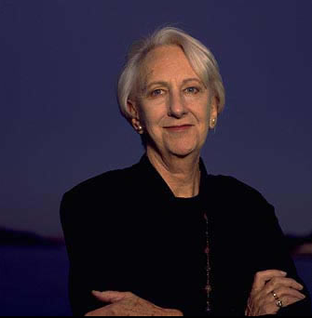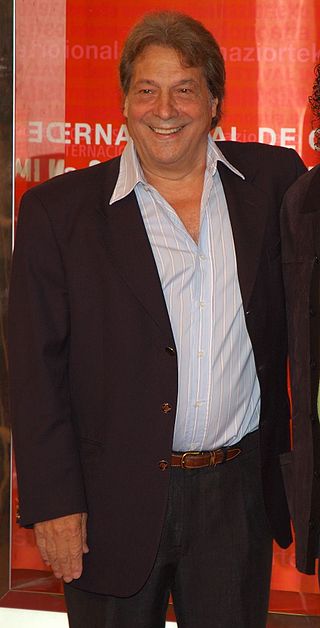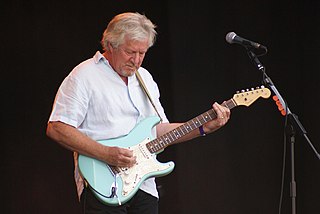Mother and Son is an Australian television sitcom that was broadcast on the Australian Broadcasting Corporation (ABC) from 16 January 1984 until 21 March 1994. The show stars Ruth Cracknell, Garry McDonald, Henri Szeps and Judy Morris. It featured many Australian actors of the time in guest roles. It was created and written by Geoffrey Atherden. Its theme song features the Tasmanian Symphony Orchestra, playing I Want a Girl , a jazz standard which was recorded by Al Jolson in the 1920s.
John Reford Ewart was an Australian actor of radio, stage, television and film. Ewart was a double nominee of the AACTA Award for Best Actor in a Supporting Role

Ruth Winifred Cracknell AM was an Australian character and comic actress, comedienne and author, her career encompassing all genres including radio, theatre, television and film. She appeared in many dramatic as well as comedy roles throughout a career spanning some 56 years. In theatre she was well known for her Shakespeare roles.

Félix Ángel Sancho Gracia was a Spanish motion picture and television actor.

Vernon Francis Cracknell was a New Zealand politician. He served as the Social Credit Party's third leader (1963–1970).

Timothy John Pearson Renwick is an English guitarist. He is best known for his association with Al Stewart in his early career and for his long-standing role as lead guitarist for the Sutherland Brothers & Quiver. His single "Dark Island" peaked at number 80 in Australia in 1980.
The Dismissal is an Australian television miniseries, first screened in 1983, that dramatised the events of the 1975 Australian constitutional crisis.

June Marie Salter AM was an Australian actress and author prominent in theatre and television. She is best known for her character roles, in particular as schoolteacher Elizabeth McKenzie in the soap opera The Restless Years and for her regular guest appearances in A Country Practice as Matron Hilda Arrowsmith.

Bex was a strong compound analgesic which was popular in Australia for much of the 20th century. It came in the form of APC (aspirin–phenacetin–caffeine) tablets or powder, containing 42% aspirin and 42% phenacetin plus caffeine.
The Meldola Medal and Prize was awarded annually from 1921 to 1979 by the Chemical Society and from 1980 to 2008 by the Royal Society of Chemistry to a British chemist who was under 32 years of age for promising original investigations in chemistry. It commemorated Raphael Meldola, President of the Maccabaeans and the Institute of Chemistry. The prize was the sum of £500 and a bronze medal.

The Night the Prowler is a 1978 Australian film written by Patrick White, produced by Anthony Buckley and directed by Jim Sharman. Ruth Cracknell was nominated in 1979 for an AFI Award for Best Actress in a Lead Role for her part.
Ronald Norman Haddrick was an Australian actor, narrator and South Australian cricketer. In 2012, he received the Actors Equity Lifetime Achievement Award for his long and distinguished career in media, spanning some seventy years both locally and also in Britain. He appeared in many Shakespearean roles and often performed with theatre actress Ruth Cracknell.
The Mercury Theatre was an Australian theatre company that was co-founded by Peter Finch and existed from 1946 to 1954. It was named after the American Orson Welles' theatre company of the same name.
Kokoda Crescent is a 1988 Australian film about World War Two veterans who seek revenge against the drug pushers responsible for the death of one of their grandchildren.
Lilian's Story is a 1996 Australian film based on a 1985 novel by Australian author Kate Grenville, which was inspired by the life of Bea Miles, a famous Sydney nonconformist. The film stars Ruth Cracknell and Toni Collette as Lilian and her younger self, respectively, alongside Barry Otto. Cracknell had been a Shakespearean actress of the stage for many years.

Virgin EMI Records was a British record label owned by the Universal Music Group that was formed in 2013. In June 2020, the label was rebranded as EMI Records, and operates Virgin Records as an imprint of the new EMI Records.
A Cup of Tea, a Bex and a Good Lie Down is a 1965 Australian stage revue by John McKellar. The title references Bex, which was a popular compound analgesic in Australia at the time. The play popularised the phrase, "A Cup of Tea, a Bex and a Good Lie Down", which "quickly became a common Australian saying".
Nice 'n Juicy is an Australian television sitcom which first screened on the ABC in 1966. The series was created by Colin Free, based on his play How Do You Spell Matrimony?. The series was set on a run down orchard at Wyvern Creek

Rodolfo Sancho Aguirre is a Spanish actor. He is best known for his television work in series such as Amar en tiempos revueltos, La Señora, Isabel, and El ministerio del tiempo.
"Tilley Landed On Our Shore" is a 1969 Australian television play. It was part of the Australian Plays series.
This page is based on this
Wikipedia article Text is available under the
CC BY-SA 4.0 license; additional terms may apply.
Images, videos and audio are available under their respective licenses.








